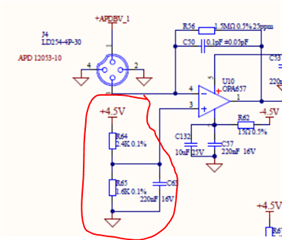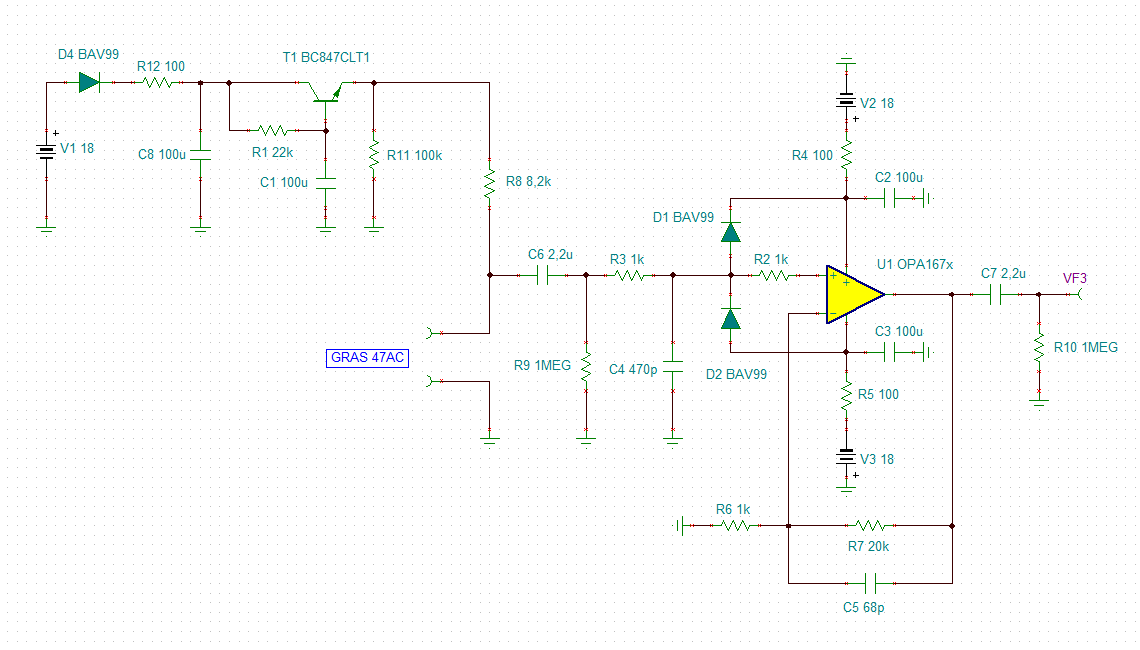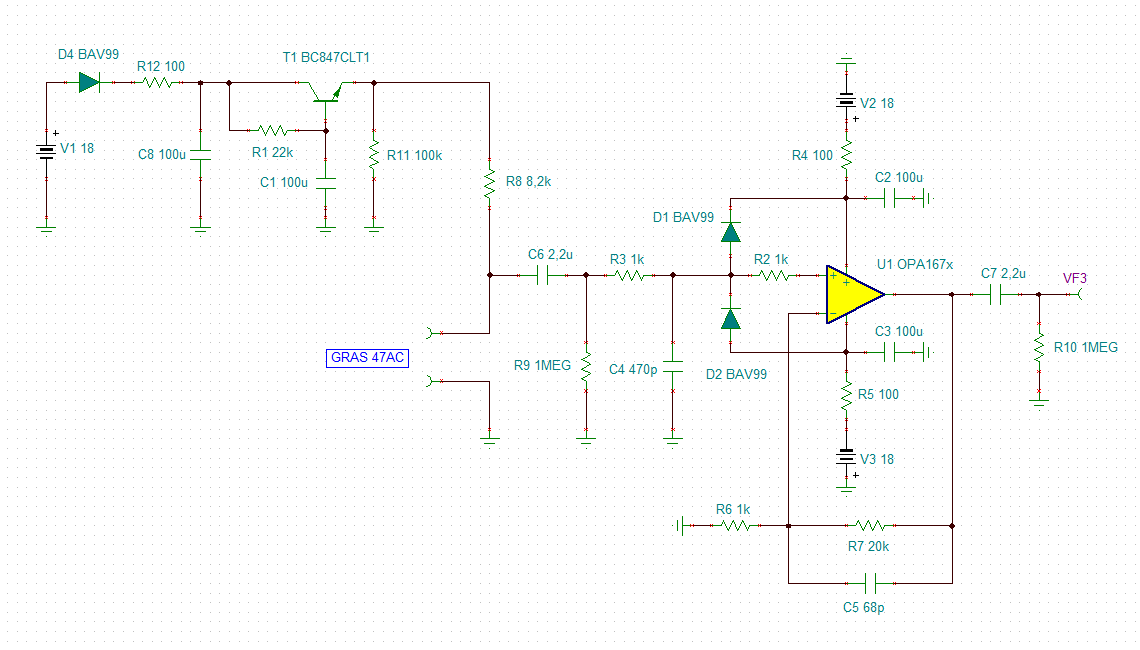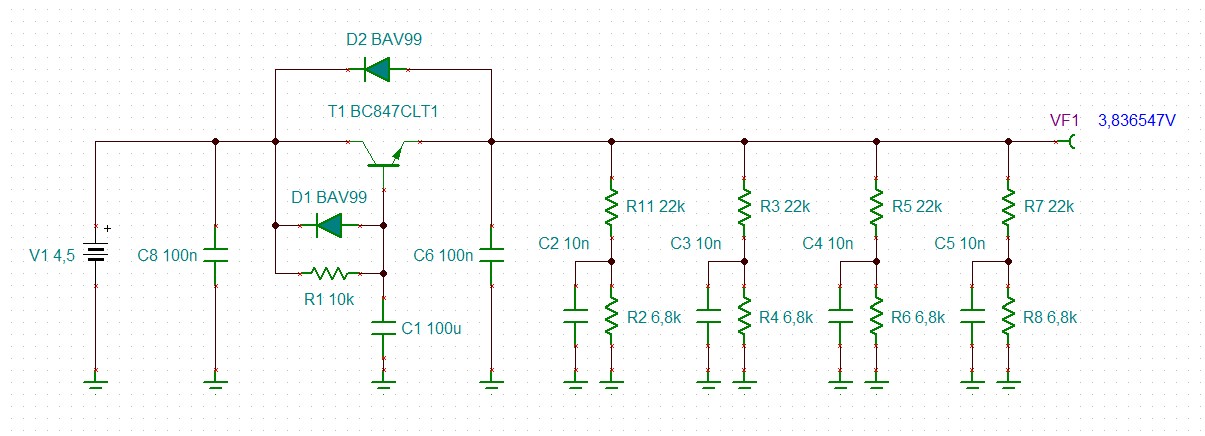Other Parts Discussed in Thread: LM4120,
Hi,
I'm waiting for the PCBA of the design discussed in the thread:
And I suddenly notice the bias reference for both TIA and FDA part:


It seems the filter consisting of voltage divider has very limited PSRR performance compared with the high PSRR of the OPAmps.
Is it a better idea to use low noise reference voltage source like LM4120 or other chips you would recommend to get best SNR performance?
Thanks!








